Textbooks
Drafting Technology, Computer-Aided Design & Building Construction Textbooks
Listed in Alphabetical Order

Architectural Drafting & Design
American Design Drafting Association Approved Publication
Seventh Edition
ISBN 13: 978-1-285-16573-8
Authors: Alan Jefferis, David A. Madsen, and David P. Madsen
Published by: Cengage Learning Inc.
Written to meet the most recent editions of IRC and IBC, this exceptional, full-color seventh edition is designed for beginning, intermediate, and advanced architectural drafters. Features the basics of residential design through the various types of projects that a designer or architect completes during the actual design process. Coverage begins with an introduction to architectural styles that have dominated the field over the last four centuries, followed by basic design components related to the site and structure.
A hallmark of this best-seller is its step-by-step instructions for the design and layout of each type of drawing associated with a complete set of architectural plans, with projects that can be completed using either CAD or manual methods. Presents the knowledge needed to complete each of the drawings required by most municipalities to obtain a building permit for a single-family residence. Comprehensive coverage also explores the field of commercial drafting and basic materials used for construction, common construction methods, and drawings typically associated with commercial construction.
Other features include fully up-to-date color photos, CAD-generated drawings, detailed floor plans, plus architectural renderings that focus readers on key architectural design principles. to increase comprehension for visual learners; CADD Application boxes feature special content related practices; drawings are the work of professional drafters, designers, architects, and engineers, and are showcased to provide alternative presentation methods as used in industry; coverage of green construction is featured, including up-to-the-minute information on the best and latest environmentally-friendly construction materials and techniques; correlated web site includes video clips with audio introductions for 30 key concepts and review questions.
AutoCAD and Its Applications-basics 2020
Autodesk Authorized Authors and Publisher
Companion Website
American Design Drafting Association Approved Technical Publication
Compatible Autodesk AutoCAD 2020
27th Edition
ISBN: 978-1-63563-864-6
Authors: Terence M. Shumaker, David A. Madsen, David P. Madsen
Published by: The Goodheart-Willcox Company, Inc.
The AutoCAD and its Applications series started in 1989 with AutoCAD Release 9 and has become the benchmark of popularity for AutoCAD textbooks. The presentation quality and hard-bound textbooks provide the best and most economical AutoCAD instruction available.
AutoCAD and its Applications, Basics provides complete instruction in mastering fundamental AutoCAD 2008 (previous releases available) commands and drawing techniques. Typical applications of AutoCAD are presented with basic drafting and design concepts and standards. The topics are covered in an easy-to-understand sequence and progress in a way that allows you to become comfortable with the commands as knowledge builds. It also offers the following features: step-by-step use of AutoCAD commands, in-depth explanations of how and why commands function, extensive use of font changes to specify certain meanings, examples, and descriptions of industry practices and standards, actual screen captures of AutoCAD and Windows features and functions, professional tips explaining how to use AutoCAD effectively and efficiently, over two hundred exercises to reinforce the chapter topics, chapter tests for review of commands and key AutoCAD concepts, a large selection of multi-discipline drafting problems supplementing each chapter. Additional applications include office practices for firms using AutoCAD systems, preliminary planning and sketches, drawing geometric shapes and constructions, special editing operations that increase productivity, making multiview drawings (orthographic projection), dimensioning techniques and practices, drawing section views and designing graphic patterns, creating shapes and symbols for different uses, creating and managing symbol libraries, and plotting and printing drawings.
Notice to AutoCAD and Its Applications customers. The publisher has decided not to publish the 2021 editions. The authors recommend that you use the 2020 editions for 2021 because of minor changes from 2020 by Autodesk. Please use our Contact Form to let us know when the 2020 edition is out of print, and we can discuss future options.
AutoCAD and Its Applications- Comprehensive 2020
Autodesk Authorized Authors and Publisher
Companion Website
American Design Drafting Association Approved Technical Publication
Compatible Autodesk AutoCAD 2016
27th Edition
ISBN: 978-1-63563-866-0
Authors: Terence M. Shumaker, David A. Madsen, David P. Madsen
Published by: The Goodheart-Willcox Company, Inc.
AutoCAD and Its Applications-Comprehensive combines all of the features and content found in AutoCAD and Its Applications-Basics and Advanced for students desiring complete AutoCAD instruction in one textbook.
Civil Drafting Technology NEW EDITION
American Design Drafting Association Approved Publication
Eighth Edition
ISBN 13: 978-0-13-443604-3
Authors: David P. Madsen and David A. Madsen
Published by: Pearson Education, Inc.
Provides comprehensive civil drafting instruction. The content has been tested in the classroom and was created with input from civil engineering industry professionals and educators in this field. The primary objective is to provide students with the foundation of work done by civil engineering companies and broad education in the civil drafting field, which includes associated drawings, skills, and terminology. Most civil drafting and mapping is generated by specialized computer-aided design and drafting (CAD D) software using a variety of data collected by electronic surveying techniques. Regardless of the software used, the drafter must still have knowledge of how maps and civil engineering drawings are created. Features include numerous illustrative examples supporting text content, actual civil drafting examples used to illustrate chapter content, civil drafting industry standards emphasized, step-by-step layout methods, civil drafting layout techniques, current CADD applications, practical and useful appendices, chapter review tests, and real-world industry problems throughout.
Civil Drafting Technology NEW EDITION
American Design Drafting Association Approved Publication
Eighth Edition
ISBN 13: 978-0-13-443604-3
Authors: David P. Madsen and David A. Madsen
Published by: Pearson Education, Inc.
Provides comprehensive civil drafting instruction. The content has been tested in the classroom and was created with input from civil engineering industry professionals and educators in this field. The primary objective is to provide students with the foundation of work done by civil engineering companies and broad education in the civil drafting field, which includes associated drawings, skills, and terminology. Most civil drafting and mapping is generated by specialized computer-aided design and drafting (CAD D) software using a variety of data collected by electronic surveying techniques. Regardless of the software used, the drafter must still have knowledge of how maps and civil engineering drawings are created. Features include numerous illustrative examples supporting text content, actual civil drafting examples used to illustrate chapter content, civil drafting industry standards emphasized, step-by-step layout methods, civil drafting layout techniques, current CADD applications, practical and useful appendices, chapter review tests, and real-world industry problems throughout.
Engineering Drawing and Design
American Design Drafting Association Approved Publication
Sixth Edition
ISBN 13: 978-1-305-65972-8
Authors: David A. Madsen and David P. Madsen
Published by: Cengage Learning Inc.
For over thirty years, students have relied on Engineering Drawing and Design for its easy-to-read, comprehensive coverage of drafting and design instruction that complies with industry standards. The Sixth Edition is the completion of over two years of development, making this textbook the most comprehensive and up-to-date on the market. Engineering Drawing and Design continues its tradition of excellence of step-by-step instructions for applying computer-aided drafting techniques that prepare you for any design environment. You also learn how to prepare drawings from engineering sketches by providing the basic guides for layout and arrangement in a knowledge-building format. Content coverage includes comprehensive ASME drafting and design practices, geometric dimensioning and tolerancing, technical illustration, kinematics, welding processes, precision sheet metal drafting, electrical and electronic drafting, industrial process pipe drafting, structural drafting, HVAC, civil drafting, descriptive geometry, fluid power, engineering charts and graphs, and comprehensive math applications and instruction. Additional engineering drawing and design chapters and appendices are provided on the accompanying website.
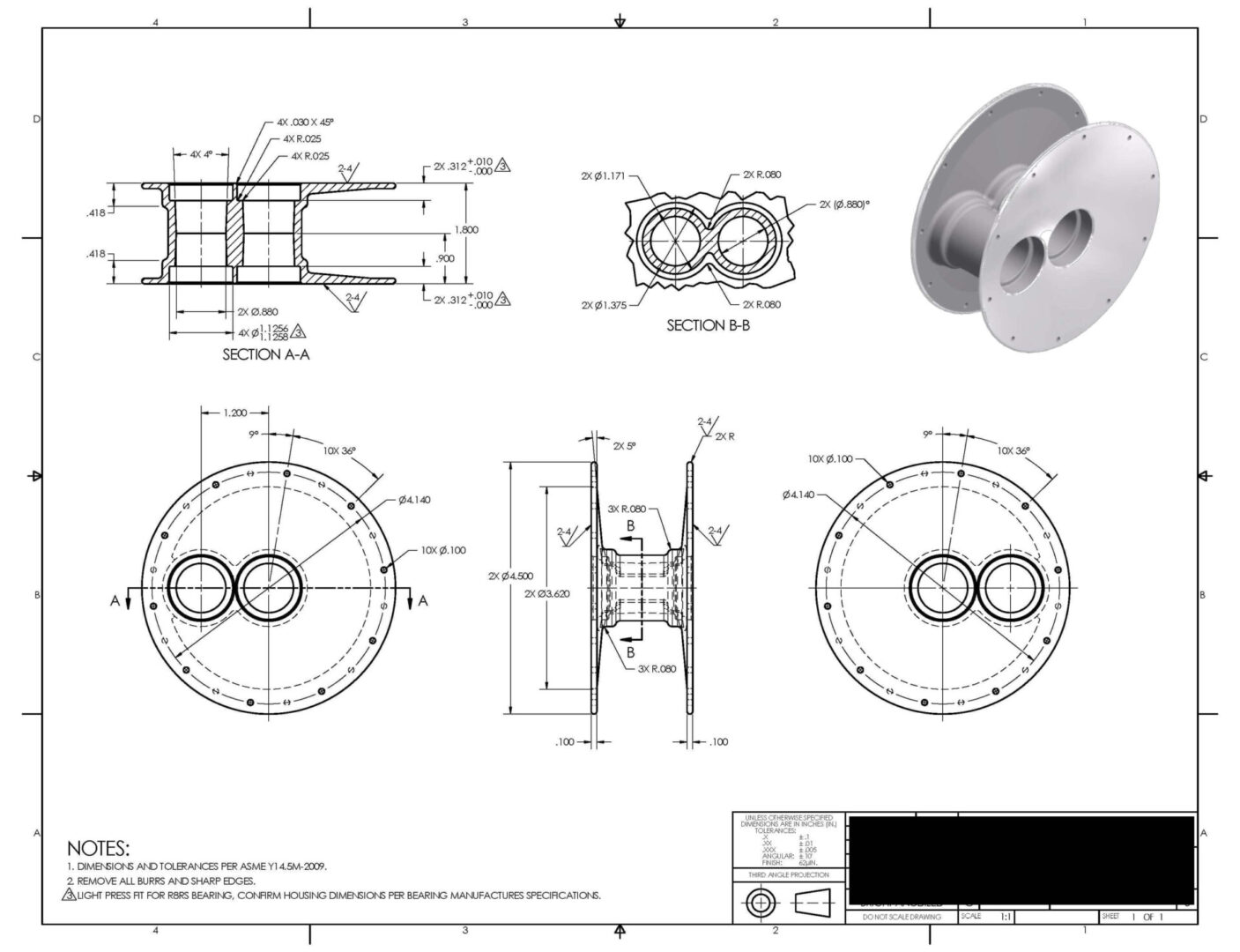
Features Include
Expanded history of drafting.
Standards feature box describes the specific standards related to chapter content.
Engineering Design Application features written by industry professionals.
Updated ASME and industry-related standards.
Updated CADD standards.
Comprehensive coverage of ASME Y14.5-2009, Dimensioning and Tolerancing, including the most comprehensive geometric dimensioning and tolerancing content found in any textbook.
CADD file templates for standard ASME inch and metric drawings and architectural and civil inch and metric drawings.
New material related to production practices that eliminate waste in all phases from design through manufacturing and to market and distribution.
Current practices seek to improve the quality of process outputs by identifying and removing the causes of defects and minimizing manufacturing variables using quality management methods.
CADD theory and applications are highlighted in an expanded full-color chapter.
CADD applications that demonstrate advances made in the industry.
Additional drafting and design problems that expand on the hundreds of problems already available throughout the textbook and on the Student CD.
Note boxed feature provides you with expanded side information relative to specific features and current applications.
Protecting the environment is one of the most important worldwide issues today. A flagship feature called Green Technology Application is found throughout this textbook, providing current practical and experimental energy-efficient design, construction and manufacturing techniques resulting in a significant reduction in energy consumption and harmful emissions.
Expanded Glossary. Every important term is defined in text and in the complete glossary.
Improved content based on comprehensive technical reviews. Professional discipline-related technical reviewers were commissioned to evaluate the content and provide input about accuracy and expanded coverage.
Chapter tests are revised to correspond with new and expanded content.
Chapter problems have been evaluated for accuracy and new problems added to reflect changes in drafting standards and for real-world applications provided by technical reviewers.
Expanded material selection criteria, manufacturing processes, and engineering design applications have been added to the Manufacturing Materials and Processes chapter and throughout the textbook.
The most comprehensive materials and manufacturing process content found in any textbook.
New additive manufacturing (AM) content.
Professional Perspectives with real-world content written by industry professionals.
New actual industry design process case studies that take product designs from concept through production.
The most comprehensive chapter-related PowerPoint presentations found in any textbook are now available on the companion website.
Detailed course-specific syllabi are on the companion website.
Comprehensive chapter-correlated ExamView tests are available for alternate testing opportunities.
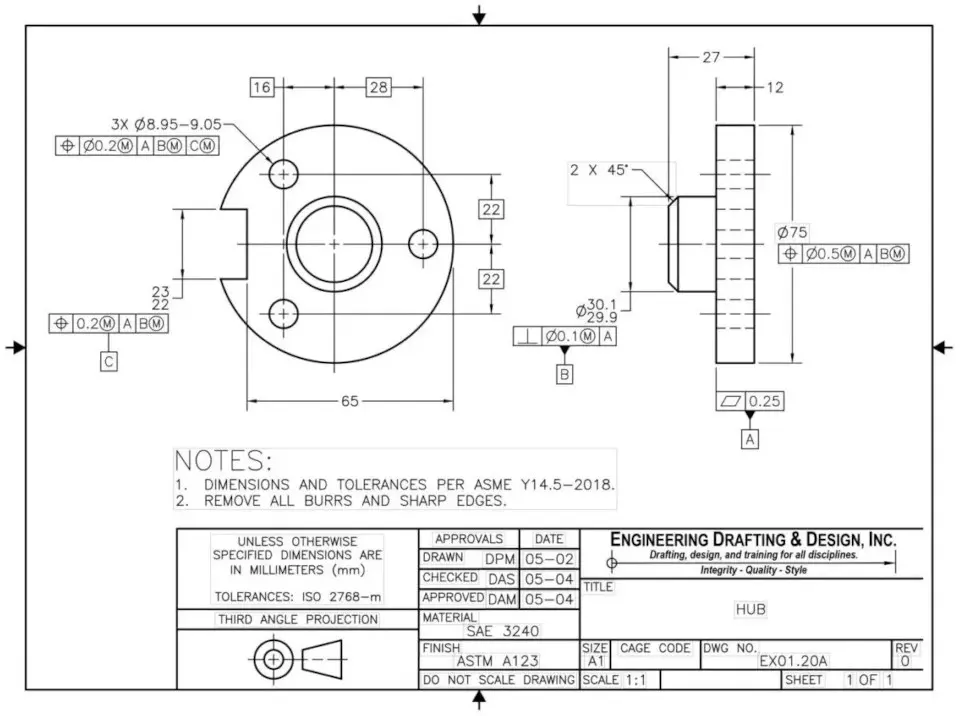
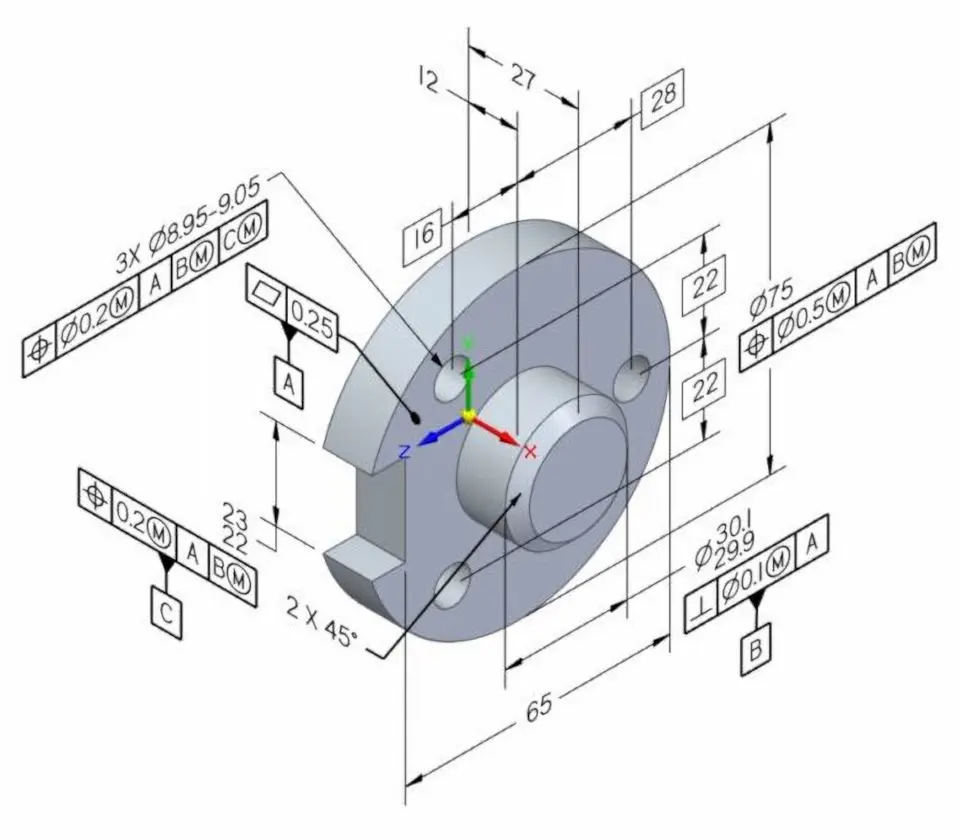
Geometric Dimensioning and Tolerancing NEW ASME Y14.5-2018 Edition
American Design Drafting Association Approved Publication
ISBN: 978-1-64564-643-3
Author: David A. Madsen, David P. Madsen and Dennis A. Schwartz
Published by: The Goodheart-Willcox Company, Inc.
Geometric Dimensioning and Tolerancing, the 10th edition, provides thorough coverage of GD&T practices based on ASME Y14.5–2018 standard. From understanding symbols on existing drawings to calculating the tolerances for proper size and location of features, topics are introduced in a methodical manner to establish an understanding of basic concepts before building to more advanced applications. Heavily illustrated, the use of the second color enhances learning.
The easy-to-read and understand textbook explains and illustrates GD&T symbology and proper representation on drawings.
The new Geometric Dimensioning and Tolerancing Essentials chapter provide an overview of GD&T, including design and manufacturing applications using GD&T.
New and expanded figure illustrations show standard methods for dimensioning 2D drawings and 3D models. Instructional illustrations include GD&T dimensioned 2D drawings and actual 3D models. A 3D model image library is provided to help instructors and students visualize parts with dimensioning and GD&T applications.
End-of-chapter tests are completely updated assessment questions requiring analysis, calculations, and critical thinking. They know and understand questions are true and false and multiple-choice to test student knowledge. The analyze and apply questions are in short answer format to further test student knowledge and understanding. The critical thinking questions challenge students to synthesize knowledge gained from the chapter and explain technical concepts. The text has a write-in format with perforated pages for completing chapter exercises and problems.
Numerous updated drafting problems provide drafting technology (CADD) students with the knowledge and skill-building drafting projects based on real-world manufacturing parts.
The updated print reading problems challenge manufacturing technology students to read and interpret actual industry prints containing 2D and 3D model views with complete dimensions and GD&T applications.
Print Reading for Engineering and Manufacturing Technology
American Design Drafting Association Approved Publication
Third Edition
ISBN: 978-1-111-30871-1
Author: David A. Madsen and David P. Madsen
Published by: Cengage Learning Inc.
A practical comprehensive workbook that is easy to use and understand. Provides a practical approach to reading prints as related to current common practices and standards. One excellent and necessary foundation of print reading training is the emphasis on standardization and quality real-world engineering and manufacturing print examples. Chapters contain realistic examples, actual prints, illustrations, related tests, and print-reading problems based on real-world engineering prints. The examples demonstrate recommended presentation with actual engineering prints used for reinforcement. This workbook explains how to read actual industry prints and interpret requirements in a knowledge-building format. The concepts and skills learned from one chapter to the next to allow you to read complete sets of working drawings in manufacturing and mechanical engineering. This print reading workbook is written and presented with current computer-aided design and drafting (CADD) technology standards with print reading examples and problems prepared using CADD in a manner that displays the highest industry standards. To fully understand the information found on real-world manufacturing and mechanical engineering prints, you must consider important information about the processes represented, the dimensional and geometric tolerances specified, and the assembly requirements for the products represented. This edition teaches you step-by-step how to read actual industry prints while building the knowledge and skills that allow you to read complete sets of working drawings. Realistic examples, illustrations, related tests, and print reading problems are based on real-world engineering prints that comply with current ASME, ANSI, AWS, and other related standards. This text contains the most comprehensive coverage of manufacturing materials and processes, dimensioning practices, and geometric dimensioning and tolerancing found in any print reading textbook. You will also discover the most comprehensive set of chapter-by-chapter ExamView questions and PowerPoint presentations found in any textbook in this discipline.
Print Reading for Architecture and Construction Technology
American Design Drafting Association Approved Publication
Third Edition
ISBN 13: 978-1-1331-2727-7, 10: 1-1331-2727-4
Authors: David A. Madsen, David P. Madsen, and Alan Jefferis
Published by: Cengage Learning Inc.
A practical comprehensive workbook that is easy to use and understand. Provides a practical approach to reading prints as related to current common practices. A necessary foundation of print reading training is the emphasis on standardization and quality architectural and construction print examples. Chapters contain realistic examples, actual prints, illustrations, related tests, and print reading problems based on actual architectural prints. The examples demonstrate recommended presentation with actual architectural prints used for reinforcement. This workbook explains how to read actual industry prints and interpret code requirements in a knowledge-building format with concepts and skills allowing students to read complete sets of working drawings in residential and light commercial architecture. The prints are presented as designs in a manner that is consistent with actual architectural office practices. This print reading workbook is written and presented with current computer-aided design and drafting (CADD) technology standards. This is an advantage as students proceed into a construction career in the 21st century. All of the print reading examples and problems are prepared using CADD in a manner that displays the highest standards and practices.
Building Construction Textbooks
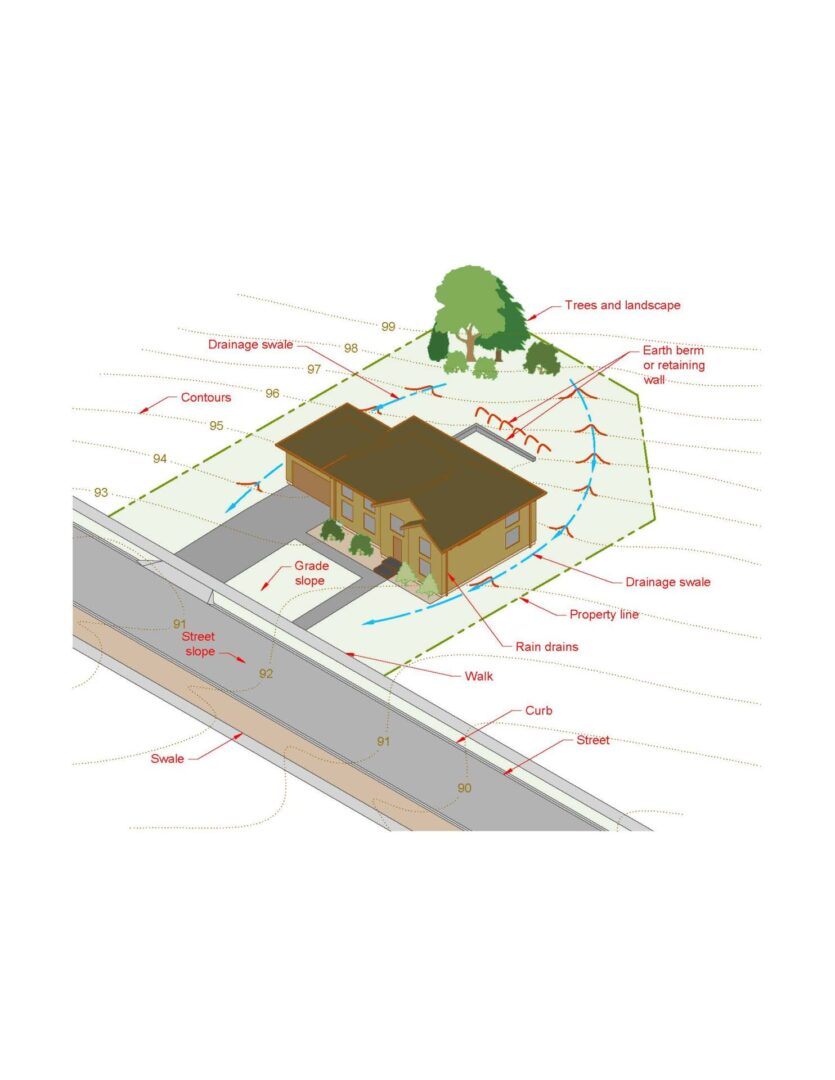
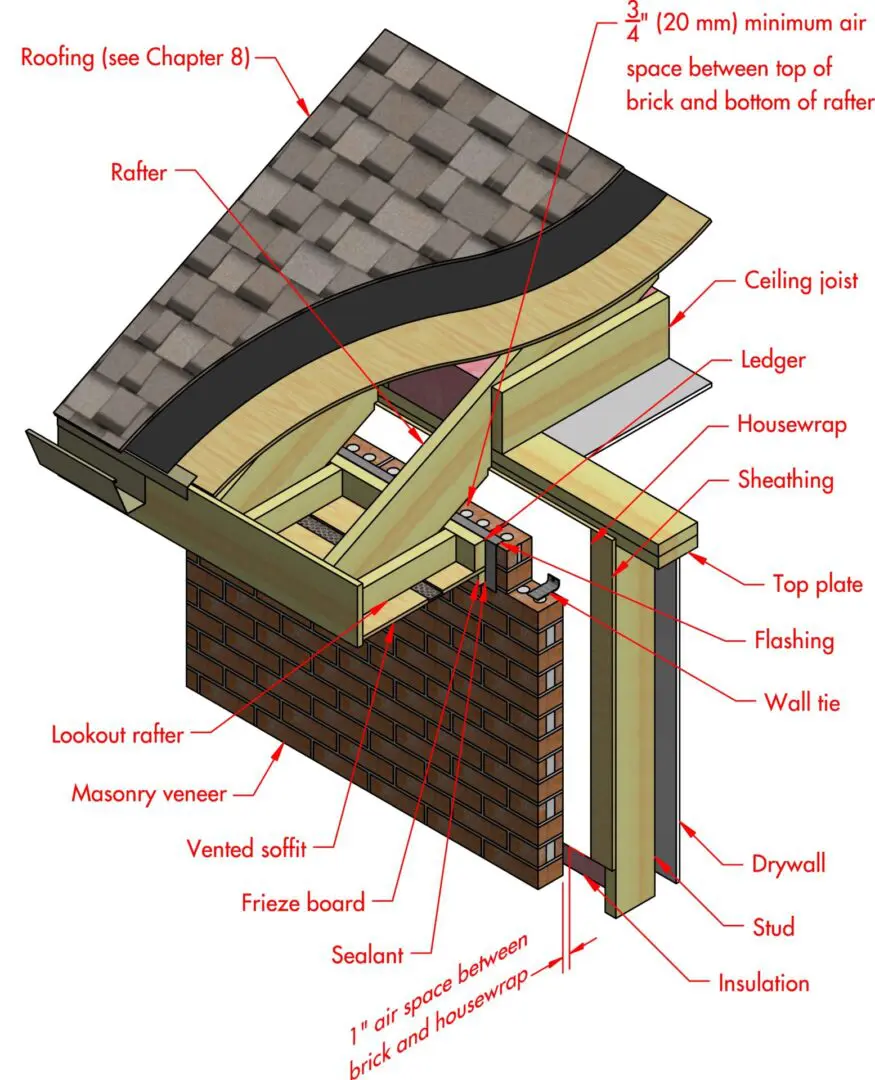
Modern Residential Construction Practices NEW EDITION
First Edition
ISBN 978-1-138-28489-0
Author: David A. Madsen and David P. Madsen
Published by: Routledge
This textbook provides easy-to-read, comprehensive, and highly illustrated coverage of commercial building construction practices that conform to industry standards. Each chapter provides comprehensive descriptions, real-world practices, realistic examples, three-dimensional (3D) illustrations, and related tests, research problems, and print reading problems. The examples illustrate typical construction practices used throughout the United States and Canada. Chapters are organized in a format that is consistent with the process used to take commercial construction projects from preliminary concept through all phases of commercial building construction.
Content Includes
Commercial Construction Plans, Specifications and Construction Management
Sustainable Technology
Construction Site and Excavation
Commercial Concrete Construction and Foundation Systems
Commercial Masonry Construction
Commercial Steel Construction
Roof Construction and Materials
Wood Construction
Commercial Doors and Windows
Insulation and Barriers, Indoor Air Quality and Safety
Stair Construction
Finish Work and Materials
Mechanical, Plumbing, and Electrical Systems
Special Note Features
Note Box
A special Note box feature is used where appropriate to provide reference to other chapters, additional explanation, helpful tips, professional information, or alternate practice.
Commercial Construction Applications
Actual real-world commercial construction applications are found throughout this textbook to reinforce what you learn with current practices used in the commercial construction industry. There is no substitute for observing the construction of actual projects and hearing accounts from architects, contractors, and material suppliers related to actual construction projects.
Chapter Tests
Each chapter ends with a content-related test used for examination, review, or other purposes described in your course syllabus. Each chapter test is organized into the following test groups:
Know and Understand. This test group is designed for reinforcement and digital platform auto-grading. This group contains true and false, and multiple choice questions.
Analyze and Apply. This test group requires you to apply concepts learned in the chapter in order to answer the question. This section consists of short answer and calculation questions.
Chapter Problems
Critical Thinking Problems. These problems are generally short essay or calculation problems that require you to analyze content in the chapter. These problems are intended to evaluate comprehension and application of higher-level learning objectives. Creative thinking problems are provided to help expand your knowledge by researching given subjects.
Image Bank
All figures found in this textbook are provided in an image bank where you can access and look at the chapter figures on your computer screen, and pan in and out for better observation, because full drawings reduced to fit on a textbook page are often difficult to read. The image bank also includes the complete set of plans for the Brookings South Main Fire Station used as examples throughout this textbook.
Glossary
The most comprehensive commercial construction glossary available anywhere is located in this textbook. Glossary terms are bold in chapter content, where they are defined immediately and also placed in the glossary for additional alphabetical reference. Each term is clearly defined using descriptions that are related to construction industry practices. In addition to terms found throughout this textbook, the glossary contains many more building construction-related terms.
Complete Set of Commercial Working Drawings
As you use this textbook to study commercial construction, you can discover the importance of being able to read actual architectural drawings that are used in commercial construction. A complete set of plans for the Brookings South Main Fire Station are used as examples throughout this textbook.”
Commercial Construction: Materials and Methods NEW EDITION
First Edition
ISBN-13: 978-1260460407
ISBN-10: 1260460401
Author: David A. Madsen
Published by: McGraw Hill
This textbook provides easy-to-read, comprehensive, and highly illustrated coverage of commercial building construction practices that conform to industry standards. Each chapter provides comprehensive descriptions, real-world practices, realistic examples, three-dimensional (3D) illustrations, and related tests, research problems, and print reading problems. The examples illustrate typical construction practices used throughout the United States and Canada. Chapters are organized in a format that is consistent with the process used to take commercial construction projects from preliminary concept through all phases of commercial building construction.
Content Includes
Commercial Construction Plans, Specifications and Construction Management
Sustainable Technology
Construction Site and Excavation
Commercial Concrete Construction and Foundation Systems
Commercial Masonry Construction
Commercial Steel Construction
Roof Construction and Materials
Wood Construction
Commercial Doors and Windows
Insulation and Barriers, Indoor Air Quality and Safety
Stair Construction
Finish Work and Materials
Mechanical, Plumbing, and Electrical Systems
Special Note Features
Note Box
A special Note box feature is used where appropriate to provide reference to other chapters, additional explanation, helpful tips, professional information, or alternate practice.
Commercial Construction Applications
Actual real-world commercial construction applications are found throughout this textbook to reinforce what you learn with current practices used in the commercial construction industry. There is no substitute for observing the construction of actual projects and hearing accounts from architects, contractors, and material suppliers related to actual construction projects.
Chapter Tests
Each chapter ends with a content-related test used for examination, review, or other purposes described in your course syllabus. Each chapter test is organized into the following test groups:
Know and Understand. This test group is designed for reinforcement and digital platform auto-grading. This group contains true and false, and multiple choice questions.
Analyze and Apply. This test group requires you to apply concepts learned in the chapter in order to answer the question. This section consists of short answer and calculation questions.
Chapter Problems
Critical Thinking Problems. These problems are generally short essay or calculation problems that require you to analyze content in the chapter. These problems are intended to evaluate comprehension and application of higher-level learning objectives. Creative thinking problems are provided to help expand your knowledge by researching given subjects.
Image Bank
All figures found in this textbook are provided in an image bank where you can access and look at the chapter figures on your computer screen, and pan in and out for better observation, because full drawings reduced to fit on a textbook page are often difficult to read. The image bank also includes the complete set of plans for the Brookings South Main Fire Station used as examples throughout this textbook.
Glossary
The most comprehensive commercial construction glossary available anywhere is located in this textbook. Glossary terms are bold in chapter content, where they are defined immediately and also placed in the glossary for additional alphabetical reference. Each term is clearly defined using descriptions that are related to construction industry practices. In addition to terms found throughout this textbook, the glossary contains many more building construction-related terms.
Complete Set of Commercial Working Drawings
As you use this textbook to study commercial construction, you can discover the importance of being able to read actual architectural drawings that are used in commercial construction. A complete set of plans for the Brookings South Main Fire Station are used as examples throughout this textbook.
LEARNING COMMERCIAL BUILDING CONSTRUCTION: MATERIALS AND METHODS
Commercial Building Construction: Materials and Methods is designed for you. Chapters are presented in individual learning segments that begin with basic concepts and build until each chapter provides complete coverage of each topic. The content of each chapter is divided into logical learning segments, providing you with an opportunity to see two-dimensional and three-dimensional illustrations of construction applications and practices. Content is based on commercial building construction practices and standards, and trends in the commercial construction industry. Use the text as a learning tool while in school, and take it along as a desk reference when you enter the profession. The amount of written information is comprehensive but kept as concise as possible. Examples and illustrations are used extensively.
INSTRUCTOR RESOURCES
The Instructor’s Manual for Commercial Building Construction: Materials and Methods contains the following features to help you develop and teach commercial building construction courses.
Chapter Test Answers
The Instructor’s Manual has each chapter test provided with the questions repeated and the answer to each question given.
Chapter Problem Solutions
The Instructor’s Manual provides written or graphic solutions to end-of-chapter problems. Actual student answers can vary but should include the fundamental content provided.
Image Bank
All figures found in this textbook are provided in an image bank where you can access and look at the chapter figures on your computer screen, and pan in and out for better observation, because full drawings reduced to fit on a textbook page are often difficult to read. The image bank also includes the complete set of plans for the Brookings South Main Fire Station used as examples throughout this textbook. Use the image bank as desired to create your own teaching presentations and print reading problems.
